How to Grow and Care 7 African Daisies
African daisies, scientifically referred to as Osteospermum spp., closely resemble common daisies with their radiating petals around a central disk. Belonging to the Asteraceae family, which also includes Shasta daisies and zinnias, they share a similar structure. However, the striking aspect that sets African daisies apart from the traditional daisy is their vibrant coloring. In fact, when these daisies were initially introduced to the market, some individuals even speculated that they must have been artificially dyed due to their vivid hues. Additionally, the center disks of the flowers can possess an appearance reminiscent of being painted with metallic colors.
The petal formation of African daisies can exhibit two distinct types. Some petals may resemble the smooth and flat shape commonly associated with daisies, while others radiate outwards in a tubular spoon-like fashion. As for the leaves, they display considerable variation among different varieties. The leaf shapes can range from lance-like to broadly ovate, and they can be either smooth, toothed, or lobed.

To ensure optimal growth, African daisies are best planted in the springtime, once the risk of frost has subsided. These daisies possess a relatively fast growth rate and typically start blooming around two months after sprouting from seeds. While they thrive reliably in zones 10 to 11, which have milder climates, in other regions with different climate conditions, these tender perennials are often cultivated as annuals. It is worth noting that although there are over 70 species within the Osteospermum genus, the majority of African daisies available in the market are cultivars and hybrids derived from species such as O. ecklonis, O. jucundum, and a select few others.
- Common Name: African daisy, cape daisy, osteospermum
- Botanical Name: Osteospermum spp.
- Family: Asteraceae
- Plant Type: Perennial, annual
- Mature Size: 1–3 ft. tall, 1–2 ft. wide
- Sun Exposure: Full
- Soil Type: Moist, well-drained
- Soil pH: Acidic
- Bloom Time: Spring, summer, fall
- Flower Color: Purple, pink, yellow, orange, white
- Hardiness Zones: 10–11 (USDA)
- Native Area: Africa, Asia
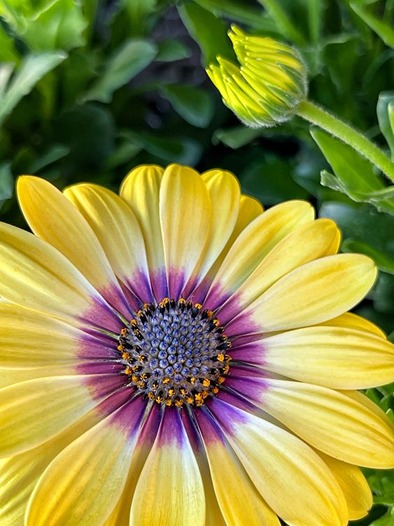
African Daisy Care
African daisies are versatile plants that thrive both when planted in the ground and when grown in containers. They exhibit their peak blooming period during late spring to early summer, and once again in late summer to early fall. However, it’s important to note that African daisies tend to cease blooming during hot spells. Therefore, it is advisable to pair them with other plant varieties that offer visual appeal during the peak of summer. As perennials, African daisies have the remarkable ability to return year after year within their designated hardiness zones. In regions with colder climates, it is recommended to take cuttings before the arrival of the first frost, allowing for the propagation of new plants indoors throughout the winter season.
When provide with an environment that suits their preferences, African daisies are relatively low-maintenance. Ensuring they receive ample sunlight and are planted in well-drained soil is crucial. Regular watering and fertilization are essential practices to follow throughout the growing season, which spans from spring to fall. Additionally, it is beneficial to deadhead the plants by removing spent blooms. This practice stimulates the plants to rebloom, promoting continuous flowering and prolonging their overall beauty.
• Light
For optimal blooming, African daisies thrive when exposed to abundant sunlight. While they can tolerate partial shade, it is important to note that this might result in a reduced flower production. Typically, the blooms of African daisies exhibit a pattern of opening in response to daylight and closing during the night or overcast weather conditions. However, certain recently developed cultivars, such as ‘4D Pink’, ‘4D Silver’, and ‘4D Berry’, possess the unique characteristic of remaining open even during the nighttime hours.
• Planting and Soil
To thrive, African daisies have a preference for soil that is organically rich, characterized by excellent drainage and a slightly acidic pH. When preparing the soil for planting, incorporating compost or other forms of organic matter is highly recommended as it enhances drainage capabilities and provides essential nutrients. It is advisable to space the plants at least 12 inches apart during planting, allowing them sufficient room to spread and grow. This spacing is particularly important as certain varieties of African daisies can reach a width of approximately 12 inches when fully matured.
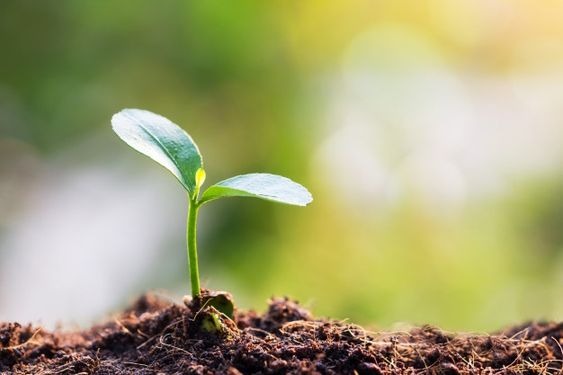
• Water
While African daisies have a moderate level of tolerance to drought once they are well-established, it is still essential to provide them with a minimum of 1 inch of water per week to support their optimal growth. In situations where drought or intense heat prevails, the plants will naturally slow down their growth and enter a dormant state. To ensure healthy development, it is advisable to maintain even moisture in the soil. However, caution should be exercised to avoid overwatering, as excessively damp soil can create a conducive environment for diseases like root rot to take hold. Striking a balance in watering practices is key to promoting the overall health and vitality of African daisies.
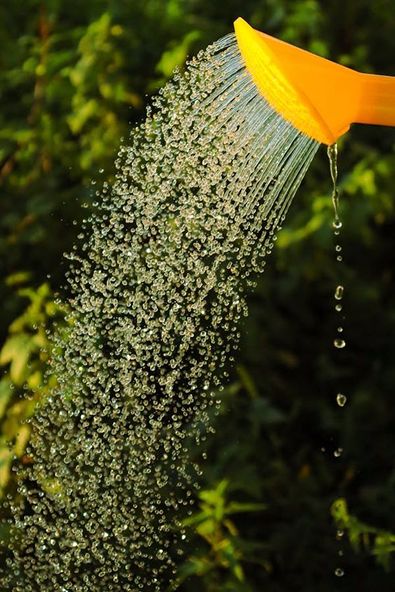
• Temperature and Humidity
African daisies exhibit a preference for moderate weather conditions, during which they showcase their most abundant blooming. They possess the ability to tolerate nighttime temperatures as low as approximately 40 degrees Fahrenheit, but it is crucial to note that exposure to frost can cause damage or even lead to the demise of these plants. In terms of humidity, African daisies generally do not encounter significant challenges as long as they are provided with proper air circulation, adequate watering, and appropriate soil drainage. Ensuring these factors are in place helps to maintain a favorable growing environment for the daisies, even in regions with higher humidity levels.
• Fertilizer
To achieve optimal growth and blooming, these flowers have a high nutrient requirement. In addition to incorporating compost into the soil during planting, it is recommended to apply a balanced fertilizer formulated for flowering plants on a monthly basis throughout the growing season. This regular feeding provides the necessary nutrients for their healthy development. It is worth noting that potted plants may require even more frequent fertilization to ensure an ample supply of nutrients in their restricted growing environment.
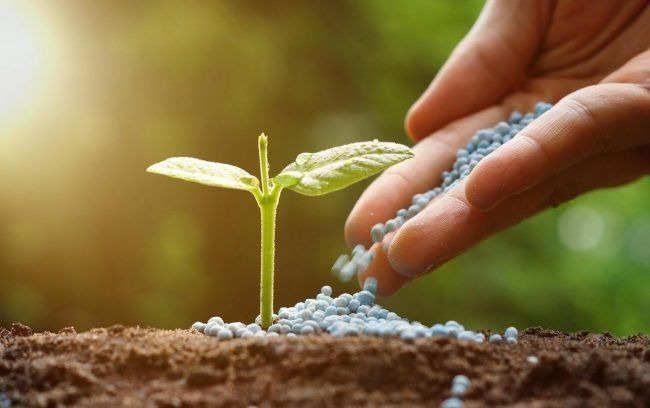
Types of African Daisy
1. Osteospermum Passion Mix
This compact variety of Osteospermum stands at approximately one foot tall and offers a range of colors, including pink, purple, rose, and white. The distinctive feature of these flowers is their blue centers. They are renowned for their ease of cultivation from seed and their ability to tolerate heat.
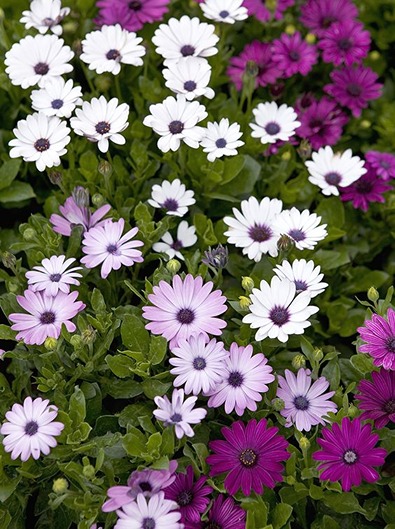
2. Osteospermum Flowe rPower Spider White
The blooms of this variety display peculiar, spoon-shaped petals in white and lavender hues, complemented by a golden center. Growing to approximately 14 inches in height, these plants make a distinctive addition to any garden.
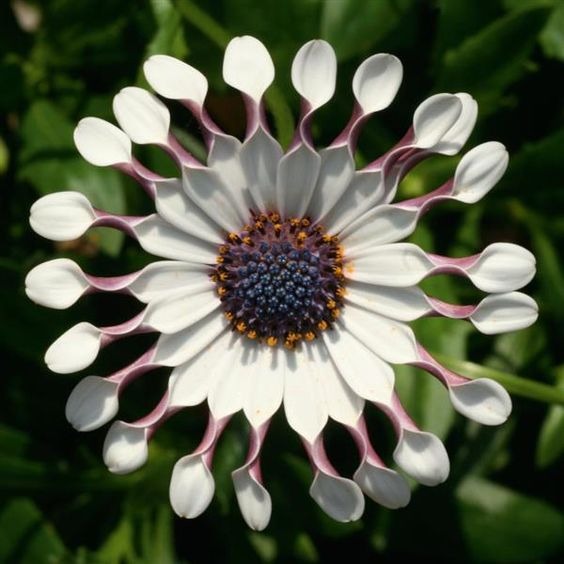
3. Osteospermum Lemon Symphony
This particular plant features butter-yellow petals with a purple center and an orange eye. With a height of about 14 inches, this variety adds a vibrant touch to the landscape.

4. Osteospermum Pink Sugar
The flowers of this variety exhibit pink and orange petals that converge into a golden center. Reaching a height of around 10 inches, these plants offer a compact and charming presence.

5. Osteospermum Ravers Hearts and Tarts
With orange and pink blossoms, this variety showcases a captivating combination of colors. It grows to an approximate height of 12 inches, making it a delightful addition to gardens and flower beds.
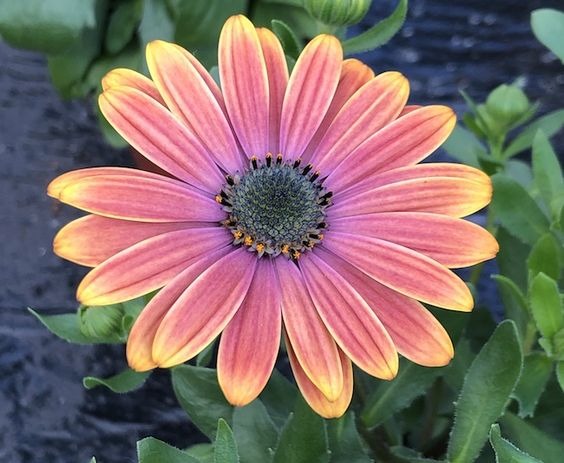
6. Osteospermum Sideshow Copper Apricot
Notable for its stunning pale apricot flowers and a purple center disk, this variety brings a touch of elegance to any landscape. Its height typically reaches up to 12 inches, adding a graceful presence to gardens.
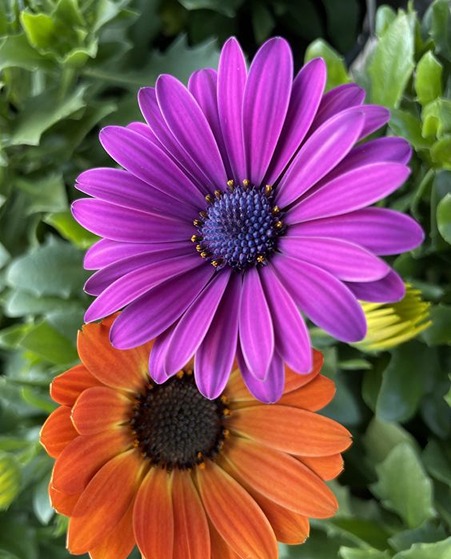
7. Osteospermum Soprano White
The blooms of this plant present a striking contrast, with white petals and a blue center bordered by shades of purple and yellow. These plants can grow up to 14 inches tall, creating a visually captivating display.
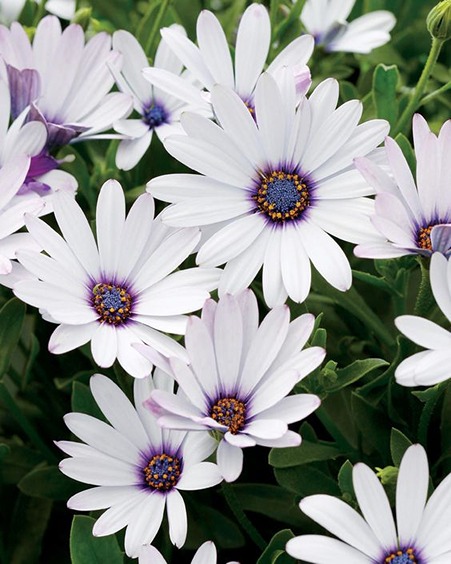
How to Propagating African Daisies
The vast majority of African daisy varieties available today are hybrids, which means that they do not produce offspring that closely resemble the parent plants when grown from saved seeds. However, propagating these plants through cuttings is a simple and effective method. This approach is also useful for over wintering the plants in regions outside their designated hardiness zones. To propagate African daisies through cuttings, follow these steps:
- Begin by preparing a shallow tray and filling it with a sterile seed-starting mixture. Gently moisten the mixture, ensuring it is slightly damp.
- Next, select plant cuttings that are approximately 2 to 3 inches long. Make sure the cuttings have at least two sets of leaf nodes. To achieve clean cuts, use sharp bypass pruners. Remove any existing flower buds and eliminate the lower leaves from the cuttings.
- Take the cut end of each stem and dip it into rooting hormone, coating it thoroughly. Afterward, plant the cut end into the prepared seed-starting mixture, ensuring it is securely inserted.
- Cover the tray containing the cuttings with a plastic dome to create a mini greenhouse effect. Place the tray in a location that receives bright indirect light. It is ideal to maintain temperatures between 60 and 68 degrees Fahrenheit in this location.
- Allow approximately four to six weeks for the plants to develop sufficient roots. Once rooted, they can be transplanted into individual containers filled with potting mix or directly into an outdoor garden location, depending on your preference.
How to Grow From Seeds
Hybrids of African daisies, which are commonly found in garden centers, are typically not readily available in the form of seeds. However, it is possible to come across seeds for certain pure species varieties, such as Osteospermum ecklonis. If you happen to obtain seeds for these varieties, you can start growing the plants from scratch. Here is a step-by-step guide on how to do so:
Approximately eight to 10 weeks prior to the last frost expected in winter or spring, take the seeds and sow them directly on the surface of a pot filled with ordinary potting mix. It is important to note that the seeds should not be buried deeply; instead, a very light covering is sufficient (as the presence of light is crucial for their germination). Throughout the germination process, ensure that the seeds remain consistently moist.
During the initial growth phase, provide the seedlings with bright indirect light to support their healthy development. This can be achieved by placing them in a well-lit area indoors. As the time for outdoor planting approaches, it is essential to gradually acclimate the seedlings to the outdoor conditions. This process, known as hardening off, involves exposing the seedlings to the outdoors for gradually increasing periods of time over a span of two weeks.
After the seedlings have been adequately hardened off, they can be planted outdoors. Immediately upon planting, it is recommended to pinch back the seedlings. This involves gently removing the top portion of each seedling, which encourages the plants to develop a more bushy and compact growth habit. This pinching back should be done soon after planting to promote optimal growth and appearance of the African daisy plants.
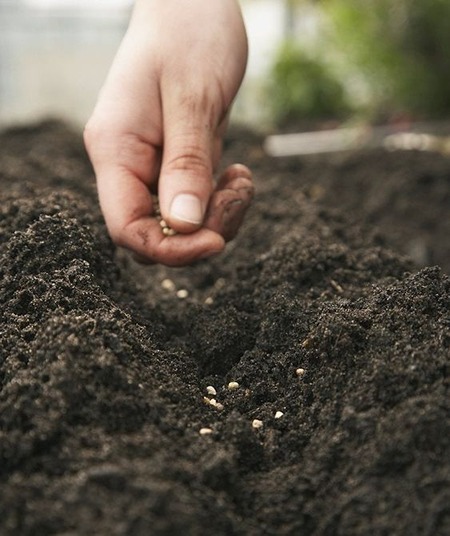
Common Pests & Plant Diseases
When African daisies are cultivated in a stress-free environment that meets their requirements, they are generally resistant to many pests and diseases. However, it is important to remain vigilant for potential fungal issues, especially in areas with high humidity or excessive moisture. These fungal problems are often indicated by damaged or discolored foliage. To address this, it is recommended to enhance air circulation around the plants, as improved airflow can help deter fungal diseases. If necessary, the use of a fungicide can be considered as a measure to combat these issues effectively.
Common plant pests, such as whiteflies and aphids, may pose a threat to African daisies, particularly when the plants are under stress. It is crucial to detect and address these pest infestations early on. One method of control involves using an insecticidal soap or a chemical spray specifically designed for this purpose. By promptly implementing these measures, it is possible to manage and mitigate the negative impact caused by these pests, ensuring the health and well-being of the African daisies.

How to Get Bloom
African daisies typically exhibit a natural tendency to bloom without requiring excessive stimulation. However, similar to many other flowering plants, regularly removing faded flowers, known as deadheading, can stimulate the plant to produce more blooms. It is important to note that various factors can contribute to reduce blooming in African daisies.
- Inadequate nutrient supply: If your plants are not blooming well, consider boosting their feeding frequency to every two to three weeks. This is especially important for potted plants, as they often require more frequent fertilization.
- Excessive heat and severe drought: If your plants are not producing sufficient blooms, it may be due to extreme heat and dryness. To address this, provide shade for your plants and ensure they receive extra watering to combat the challenging conditions.
- Insufficient sunlight: Although African daisies can tolerate partial shade, insufficient sunlight can result in elongated stems and limited blooming. To promote optimal flowering, ensure that your plants receive an adequate amount of sunlight and avoid placing them in areas with too little sun exposure.
Common Problems
African daisies are generally low-maintenance plants, but apart from the usual concerns related to insects and diseases, a few other commonly encountered issues may arise:
• Animal Damage
Groundhogs have a particular affinity for annual plants, with a strong preference for flowers. When it comes to safeguarding your garden from these feeding animals, the most reliable and effective method is to install durable fencing.
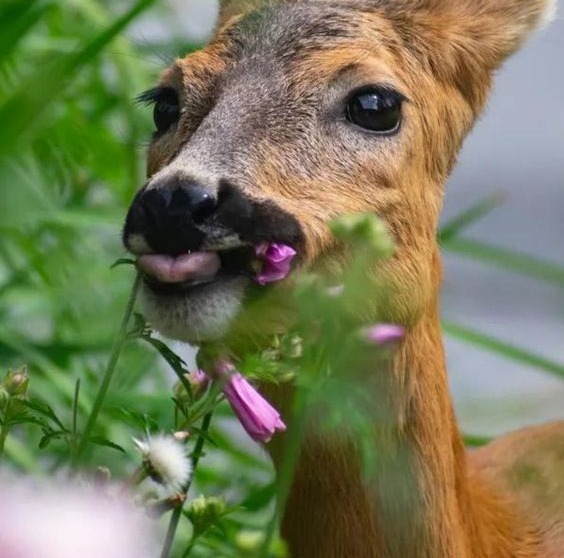
• Reduced Flowering during Midsummer
In regions with cooler climates, African daisies typically exhibit continuous blooming from spring through fall. However, in extremely hot and humid climates, it is common for the plants to enter a semi-dormant state during the hottest weeks of midsummer. This is a natural response, and as the weather begins to cool, the plants typically recover and resume their normal growth. In such regions, it is advisable to plant African daisies in areas with partial shade to provide them with optimal conditions.



